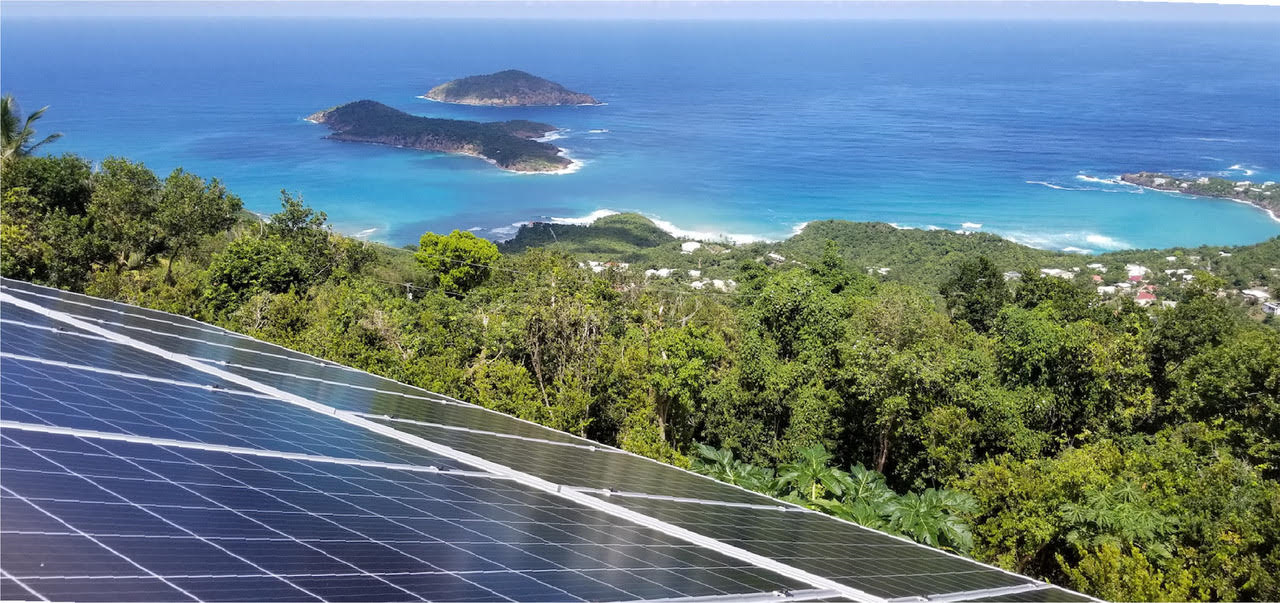
A new net metering program introduced this year by the Virgin Islands Energy Office creates an opportunity that will allow home generators to sell excess power to the V.I. Water and Power Authority, but one vendor said it also might provide incentives for people to install batteries and keep that power for themselves.
Net metering programs – programs that allow residents producing energy from the sun or wind to sell their excess energy to the utility – are not new to the territory. The Virgin Islands adopted its first program in 2007.
However, the program reached its limits – five megawatts on St. Croix and 10 on St. Thomas – in 2014. More than 400 homes on St. Thomas and St. John and more than 300 on St. Croix had signed up for the programs. Negotiations began between the Energy Office, vendors and WAPA to establish a new program that began at that time. Representatives of the utility saw the original program as too generous to residents sending energy back to the grid. Residents were getting full use of the grid, but not paying any of the underlying costs of the infrastructure.
In 2017 the original program was shut down, but no replacement was put into effect until this year.
Kyle Fleming, director of the Energy Office, told the Source the closing of the program “resulted in a void in sustainable, renewable energy policy within the territory.”
The new program is called the Net Energy Billing program. According to Fleming, the new program was developed through a collaborative interagency working group.
One vendor said the program, which has extra costs to hook into the grid, creates the unintended benefit of incentivizing building solar with battery backup.
“Residents will see an advantage in a partial battery system because they won’t be paid the going price for the electricity they sell back to WAPA,” said Jason Mazzone, managing member of Electric Factory.
Under the new program, residents will receive the “reduced excessive generation compensation.” Instead of receiving what they pay for power, which is 40 cents per kilowatt-hour, they will receive 75 percent of the Levelized Energy Adjustment Clause, which is essentially what WAPA pays for fuel. LEAC is presently 15 cents per kilowatt-hour so, under the new program residents will receive 11 cents for the kilowatt-hours they sell to WAPA. Those under the original program will still receive 40 cents.
Residents might also decide to go completely with a battery system instead of tying into the grid because of the decreasing costs of batteries and increasing efficiency.
Mazzone also referred to the “sticker shock” of tying into the grid as an incentive to stay out. For the moderate-sized residential system there will be a $20 monthly grid access charge. The access fee increases as the size of the system increases.
There will also be an electrical permit from the Department of Planning and Natural Resources that will cost $250 or more, plus an inspection from WAPA that will also cost $250 or more.
“The fees owed to WAPA up front may have a bit of sticker shock, but when you crank the numbers and calculate your return on investment, they are nominal,” Mazzone said. “These fees are part of the much-needed compromise between WAPA and the needs of the citizens. … If we want to connect to an energy grid that costs hundreds of millions of dollars to build and maintain, then we must analyze the numbers and come up with a solution that satisfies all parties. If we want the opportunity for everyone to go solar, we can’t punish those who have not bought solar by forcing them to subsidize the costs of maintaining a grid for those who have bought solar.”
The Net Energy Billing program was officially implemented through Public Services Commission on June 15. The program applies to all future grid-connected distributed generation installations as well as all grid-connected systems that were installed following the June 2017 closure of the NEM program and were not grandfathered into the NEM program. These systems must be registered within the Net Energy Billing program.
Fleming also reminds unregistered distributed energy stakeholders that the Net Energy Billing program is not voluntary.
“We expect all currently installed, non-Net Meter, and future grid-connected distributed energy installations to be registered within the program.”
The Energy Office is scheduling in-office walk-throughs of the online permitting portal, and invited installers, electricians and property owners to call 340-713-8436 to schedule an appointment on St. Croix or St. Thomas.
WAPA line crews and DPNR inspection teams will be identifying unregistered installations, he said, adding that systems found out of compliance will be issued a warning sticker and after two weeks, if an application has not been submitted and willful negligence has been identified, fines will be assessed to the property owner.





